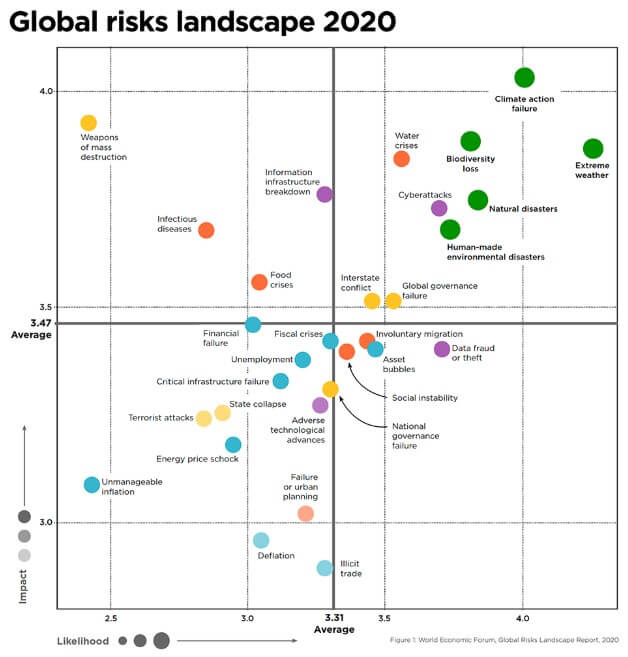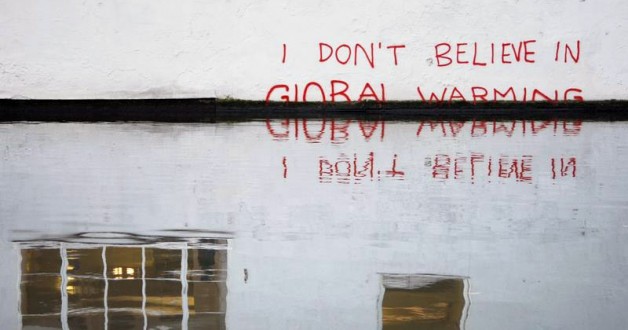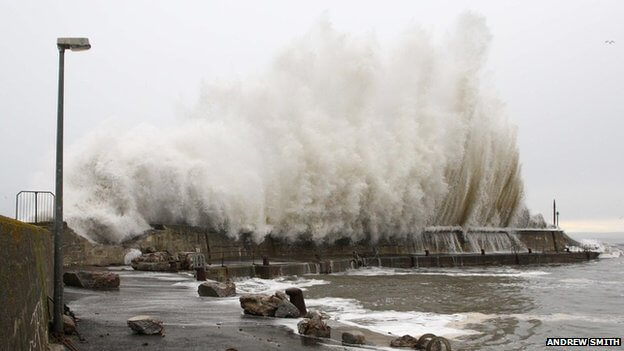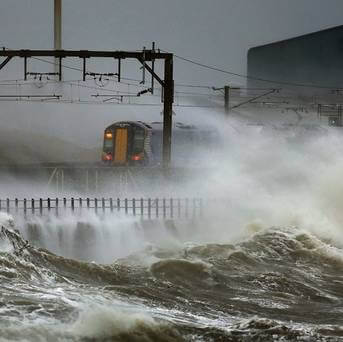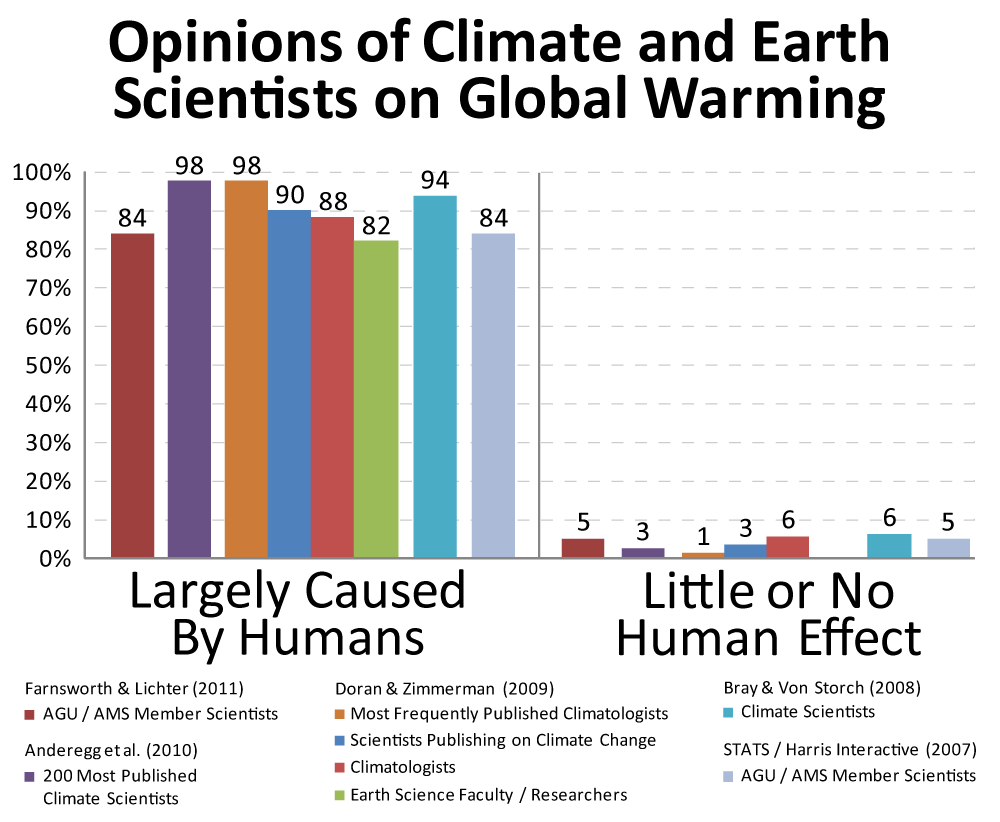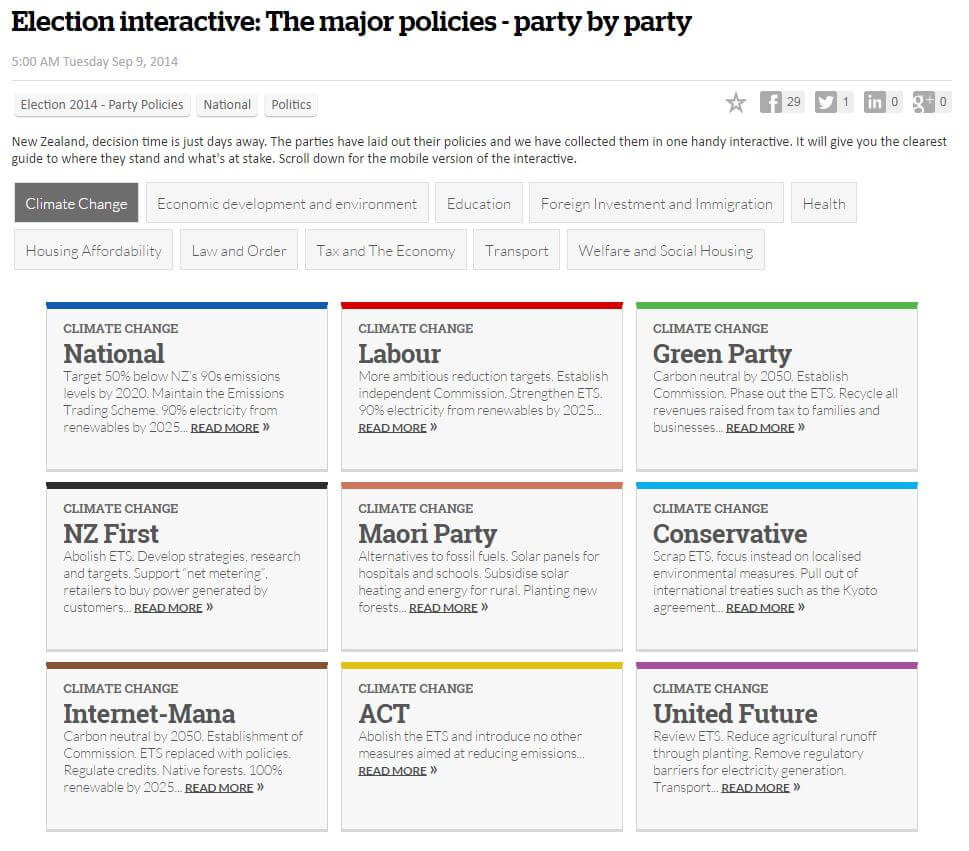Greenhouse Gas Emissions
Climate change is primarily caused by the accumulation of Greenhouse Gases (GHGs) in the atmosphere due to human activities. GHGs absorb heat from the Earth’s surface, warming the atmosphere. Different GHGs remain in the atmosphere for different amounts of time, ranging from a few years to thousands of years.
How are we tracking?
New Zealand is not on track to met the 2020 or 2050 targets
New Zealand’s response to the Climate Crisis
The Climate Change Response (Zero-Carbon) Amendment Act 2019
MFE reporting
- The Ministry for the Environment (MfE) has the primary responsibility for reporting on NZs progress.
- measures and definitions relating to greenhouse gases
- emission tracker
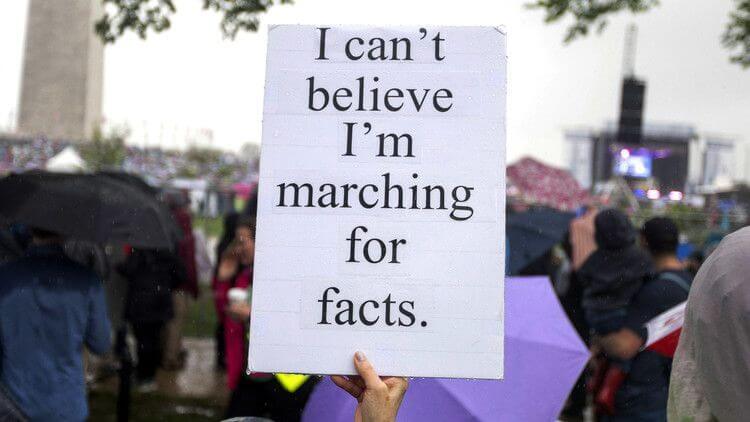
NZ public lack a commitment to climate change
- During the 2017 election campaign, Jacinda Ardern stated that climate change was her generation’s “nuclear-free moment”.
- In an interview with the Spinoff in October last year, however, Ardern said she had “upgraded” that position because she did not see the same level of national unity around climate change that there had been around nuclear-free New Zealand.
- “What we’re doing on climate change – it is just that much harder because it’s a call to action for everyone.
- I’m hoping we can get to the place of having that same unified moment that we had around nuclear-free for climate change.”
2016 - Gross CO2 emissions from the energy section
New Zealand’s share of global GHG emissions is small, but our gross emissions per person are high. New Zealand’s emissions mainly come from the combustion of fossil fuels that emit CO2 (carbon dioxide), and agriculture, which emits CH4 (methane) and N2O (nitrous oxide).
Data used may not include the latest emissions data, which can be found at New Zealand’s Greenhouse Gas Inventory.
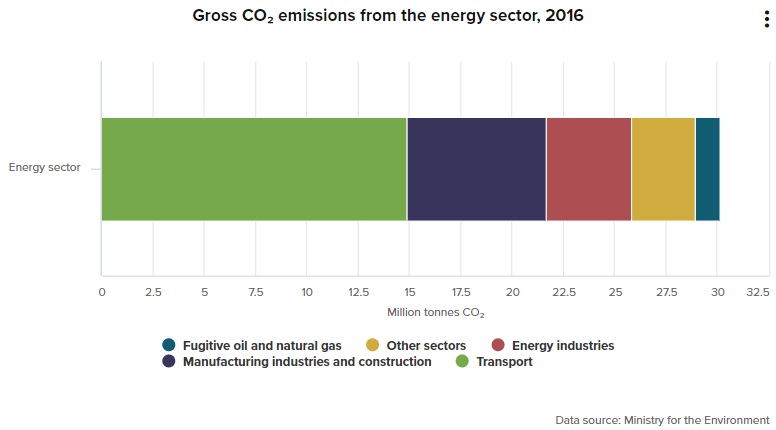
Purpose is to Limit the global average temperature increase to 1.5° Celsius above pre-industrial levels
The Climate Change Response (Zero Carbon) Amendment Act 2019 provides a framework by which New Zealand can develop and implement clear and stable climate change policies that:
- contribute to the global effort under the Paris Agreement to limit the global average temperature increase to 1.5° Celsius above pre-industrial levels
- allow New Zealand to prepare for, and adapt to, the effects of climate change.
The changes do four key things.
They:
- set a new domestic greenhouse gas emissions reduction target for New Zealand to:
- reduce net emissions of all greenhouse gases (except biogenic methane) to zero by 2050
- reduce emissions of biogenic methane to 24–47 per cent below 2017 levels by 2050, including to 10 per cent below 2017 levels by 2030
- establish a system of emissions budgets to act as stepping stones towards the long-term target
- require the Government to develop and implement policies for climate change adaptation and mitigation
- establish a new, independent Climate Change Commission to provide expert advice and monitoring to help keep successive governments on track to meeting long-term goals. See the Climate Change Commission website.
The original proposal was for a separate piece of legislation called the Zero Carbon Bill to be passed into law. In May 2019, the Government decided to introduce it as an amendment to the Climate Change Response Act 2002. The objective was to ensure that all key climate legislation is within one Act.
Implement a transitional period till 2021
There will be a transitional period to 2021 to get the new provisions up and running.
- The Ministry for the Environment:
- has already begun work on the first National Climate Change Risk Assessment. Future Risk Assessments will be carried out by the Climate Change Commission.
- is also developing a provisional emissions budget for 2021–2025. This will provide an early sense of direction before the first three emissions budgets (for the emissions budget periods 2022–2025, 2026–2030 and 2031–2035) are recommended by the Climate Change Commission in early 2021, and set by the Government by the end of 2021.
- The NZ ETS will be an important tool in delivering emissions reductions and helping New Zealand achieve its emissions budgets and 2050 target. The provisional emissions budget for 2021–2025 will be used to inform the unit supply settings.
Responses to the Climate Change Response (Zero-Carbon) Amendment Act 2019
National Party said that while it welcomed the proposed amendments, they had “serious reservations about the expected rate of reduction for methane”. Simon Bridges said: “We are not convinced that the proposed 24-47% reduction for methane meets our test in terms of science, economic impact or global response.”
Greenpeace – The bill was also criticised by Greenpeace for having no way of enforcing its targets.
Forest & Bird was “disappointed” at what it saw as special treatment for agriculture.
Beef and Lamb New Zealand said the methane approach made unfair demands on farmers. “It’s unreasonable to ask farmers to be cooling the climate, as the government’s proposed targets would do, without expecting the rest of the economy to also do the same,” said a spokesperson.
“Beef + Lamb New Zealand is calling for a fair approach, where each gas is reduced based on its warming impact. An equitable approach requires carbon dioxide and nitrous oxide to go to net zero, and methane to be reduced and stabilised by between 10-22%.”
Some Facts
The Top 5 Risks are all environmentally related
- Extreme weather events with major damage to property, infrastructure and loss of human life
- Failure of climate-change mitigation and adaptation by governments and businesses.
- Human-made environmental damage and disasters, including environmental crime, such as oil spills, and radioactive contamination.
- Major biodiversity loss and ecosystem collapse (terrestrial or marine) with irreversible consequences for the environment, resulting in severely depleted resources for humankind as well as industries.
- Major natural disasters such as earthquakes, tsunamis, volcanic eruptions, and geomagnetic storms.
The report is produced by the World Economic Forum.
CO2, Climate Change and 400ppm
9 May 2013 – the concentration of CO2 in the earth’s atmosphere reached 400 ppm
An atmospheric concentration of CO2 > 350 parts per million is seen as unsafe
Insurance companies
Insurance companies use climate change evidence to mitigate their business risk
- A major insurance company is accusing dozens of localities in Illinois of failing to prepare for severe rains and flooding in lawsuits that are the first in what could be a wave of litigation over who should be liable for the possible costs of climate change.
Severe weather events will become more frequent
Lloyds of London Thu 08 May 2014
- Against a background of more frequent severe weather events, such as floods and windstorms, a new report from Lloyd’s highlights the importance of insurers ensuring that their catastrophe modeling tools keep pace with the effects of climate change.
- They quote the fifth assessment from the Intergovernmental Panel on Climate Change (IPCC), stresses that increasing magnitudes of warming is increasing the likelihood of severe and pervasive impacts that may be surprising or irreversible.
Storm surge is from rising sea levels is now the main damaging effect of hurricanes and storms
Dr Muir-Wood Chief Research Officer at Risk Management Solutions,
- …”Water is the new wind” in hurricane risk….in Hurricane Katrina more than 50% of losses were caused by flooding and storm surge. With hurricane Sandy, the majority of loss was also caused by storm surge, not wind…Looking to the 21st Century, he expects sea levels to rise which will further affect forecasting.
Business Initiatives
Many businesses are applying their understanding of climate change to make a living
- USA Today Posted 6/9/2008 10:20 – Weather derivatives becoming hot commodities
- Windfall: The Booming Business of Global Warming—
- Israeli company that sells snowmaking machines to Alpine ski resorts
- Wall Street investor who buys up Sudanese farm land
- Dutch companies selling their flood-fighting technology
- Seattle company that collects patents on geoengineering technologies

NZ GHG intensity
- The ratio of total greenhouse gas emissions to real gross domestic product (GDP), which takes into account production and consumption levels, overall has fallen since 1990. This means fewer emissions are produced per unit of real GDP.
- Possible reasons include changes in the composition of the economy, for example the growth of the service sector, which produces relatively fewer greenhouse gases compared with other sectors.
Skeptics
1. The climate change message is seen as too complex
2. Some people believe that climate change is not caused by human factors but part of a natural cycle
Expert credibility on climate change
- An extensive dataset of 1,372 climate researchers and their publication and citation data shows that
- 97–98%of the climate researchers most actively publishing in the field surveyed here support Anthropogenic Climate Change (ACC) outlined by the Intergovernmental Panel on Climate Change, and
- the relative climate expertise and scientific prominence of the researchers unconvinced of ACC are substantially below that of the convinced researchers
This link provides more references for scientific research supporting Anthropogenic Climate Change
3. There are other more pressing problems
4. Solutions are too complex
5. People prefer good news stories
Past elections policies
Information prepared for 2014 and 2017 general elections
2017 information from StatsNZ
From Stats NZ (2017)
New Zealand’s net greenhouse gas emissions have increased 54 percent since 1990
- New Zealand’s net greenhouse gas emissions increased 54 percent between 1990 and 2014. Total emissions increased 23 percent.
- A total of 24.4 million tonnes of carbon dioxide (CO2) equivalent was removed from the atmosphere in 2014, equivalent to 30 percent of New Zealand’s total greenhouse gas emissions that year. There has been a 16 percent decline in removals since 1990.
- Trees absorb carbon dioxide as they grow, and so remove it from the atmosphere. The increase in net emissions and decrease in removals are partly explained by the large quantity of forests planted in the early 1990s, which are now mature or have been harvested.
2014 information from StatsNZ

New Zealand’s net greenhouse gas emissions have increased 111 percent since 1990 – From Stats NZ (2014)
- New Zealand’s net greenhouse gas emissions increased 111 percent between 1990 and 2012. Total emissions increased 25 percent.
- A total of 26.6 million tonnes of carbon dioxide (CO2) equivalent was removed from the atmosphere in 2012, equivalent to 35 percent of New Zealand’s total greenhouse gas emissions that year. There has been a 29 percent decline in removals since 1990.
- Trees absorb carbon dioxide as they grow, and so remove it from the atmosphere. The increase in net emissions and decrease in removals are partly explained by the large quantity of forests planted in the early 1990s, which are now mature or have been harvested.
Making a difference

29 July 2009
- Deutsche Bank erected a seven-story sign outside Madison Square Garden in New York
- the counter shows that CO2 is being added to the atmosphere at the rate of 800 tons per second
- Unveiling the sign, Deutsche Bank officials said it was designed to highlight the crisis of global warming and the urgency of reducing CO2 emissions






